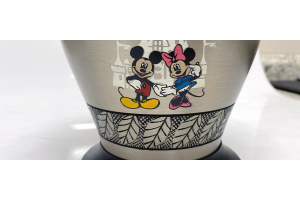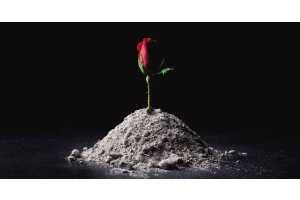
The evolution of the modern cremation urn is a long and surprising story. It seems that the range of evidence is always changing to show that urns were used in earlier and more remote societies. Over thousands of years, cultures used cremation urns to store human remains as well as important artifacts. They created columbarium to keep larger numbers of remains. In more recent history, cremation became modern, with modernized urns for ashes as well. The future of urns appears to be customization, as a means to ensure that customers get precisely what they are looking for.
Urn’s Ancient History
The Cremation Association of North America (CANA) argues that cremation itself began sometime during the late Stone Age in Europe and the Near East, probably about 5,000 years ago. In time, its popularity spread East and West, across modern-day Russia and to the British Isles. CANA notes that research improves on the study of cremation largely as a result of the development of cremation urns, typically made from pottery. As interest in the study of cremation increases, more evidence is found to support the idea that cremation urns emerge in earlier periods elsewhere in the ancient world. For example, a 2005 analysis in Jiahu, China showed that urns were in regular use since about 9,000 years ago. The practice gained traction with ancient Roman civilization, which spread swiftly and totally throughout much of Europe. However, during the Middle Ages, with the change to monotheistic society, cremation became almost unheard-of. Archaeologists base this assumption on the almost complete absence of cremation and use of urns in this period, with the notable exception of the mass devastation of the Bubonic Plague in the 14th and 17th centuries.
Urns in Ancient American Civilization
Evidence from Central America indicates that cremation was a popular idea among many cultures living completely independent of each other. A 2008 analysis of burial sites in Tayata, an ancient Mixtec village in modern-day Oaxaca, Mexico, reveals that cremation was a well-used form of treating the body after death. About 3,000 years ago, cremation was reserved for those in high standing in the community. This tradition extends thousands of years, waxing and waning in popularity, into late Mayan culture, with the use of pottery urns sealed tightly with resin. Archaeologists were able to date the urns’ contents, largely through the presence of textiles placed inside the urns, to around the time of the Spanish Conquest in the early 16th Century. This may also explain why early urns were often larger than modern urns, as they were used to hold other artifacts.
A Look at Early Columbarium
For almost as long as cultures have had the practice of cremation, they have wondered where they might put the remains. In the earliest cultures, charred bones were buried in the ground much as an intact body would have been. As cremation increased in popularity in the ancient world, people began to realize that they needed an effective means to store the urns they had. The Romans developed columbarium, tombs for urns that were generally underground. Throughout early Christianity, columbarium typically existed inside churches or in consecrated cemeteries.
Victorian Revolutions
Leave it to the Victorians to bring cremation back into vogue. In the 1860s, trying to deal with the problems inherent to industrialized civilization and vast population growth, European and American societies realized that the time had come to develop a better form of burial. Bolstered by the support of Queen Victoria’s surgeon for the use of cremation, along with calls for the same in other countries, inventors began to refine furnaces for use as crematoria. At this time, working models for crematoria arrive in England, Germany and Pennsylvania. Historians note a rise in the development and construction of columbarium in this period as well, as a means to safely and respectfully store people’s cremated remains.
Modern Styles
In the past century, the idea of a cremation urn has changed dramatically. Initially, people chose materials for urns that were intended to last for a very long time. As urns were typically placed aboveground in a tombstone, or in a cemetery’s columbarium, the urns had to be sturdy enough to weather the elements. Common materials included: • Metal (typically brass) • Wood • Stone However, as the decades passed, families began to change their minds about what cremation should mean to them. Instead of the idea that the treatment of the body should happen based entirely on tradition, the concept of whimsy entered cremation culture. People wanted to have pictures on the urns that they kept at home as a visible reminder of the loved ones they lost. They needed to have an inscription on the urn to identify the ashes contained within. This led to the progression of customization, which spread in two different fashions. First, families wanted the urns they purchased to be a perfect representation of the person, with all kinds of colors, shapes and styles for the urn. Second, in the absence of a tombstone, they wanted the ability to have a posted message of their love.
Future Innovations
At present, the options available for custom cremation urns are surprising to almost anyone who does not work in the industry. The field is constantly changing, with the addition of biodegradable urns, urns for burial at sea, and even additive manufacturing to make the idea of a truly custom urn a reality for the hundreds of thousands of people who now choose cremation each year. In The Light Urns stands at the forefront of this revolution, continually seeking ways to provide the ultimate in customer satisfaction. The rich history of urns shows that cultures are always changing. In the 21st Century, it is obvious that the future of urns means better customization and more designs to make the process of cremation more unique than ever.





